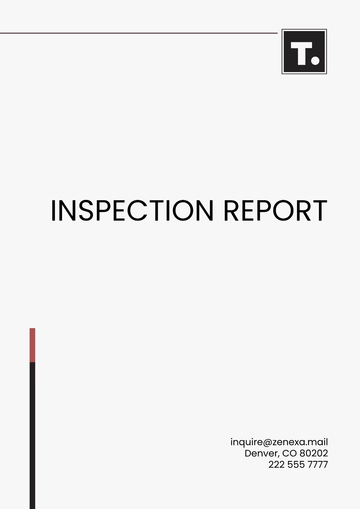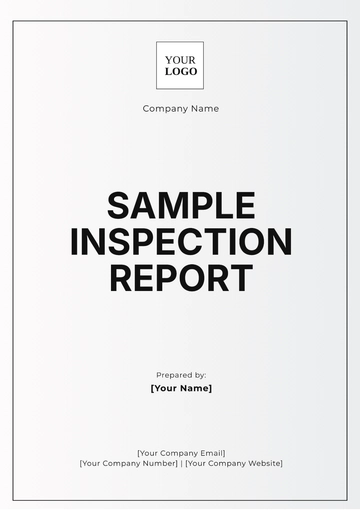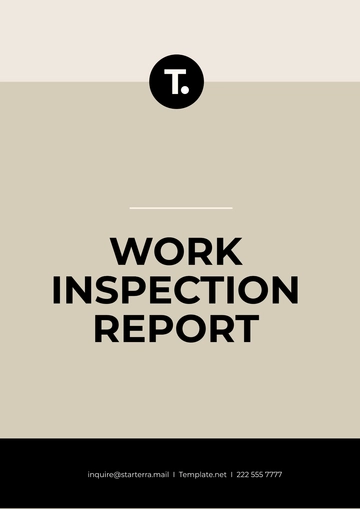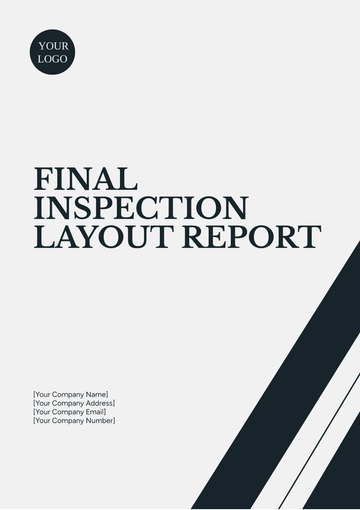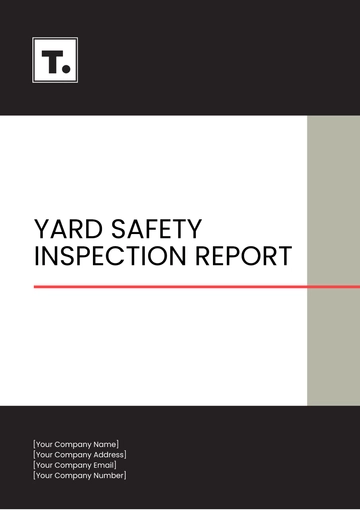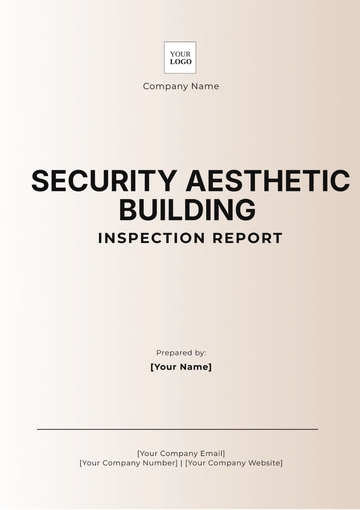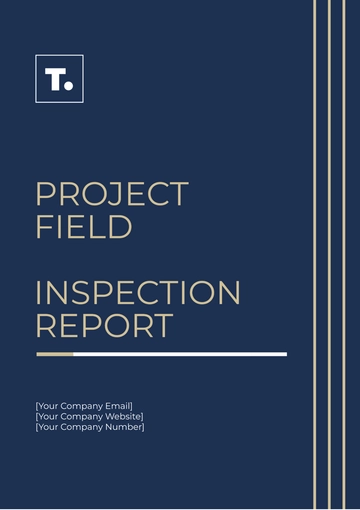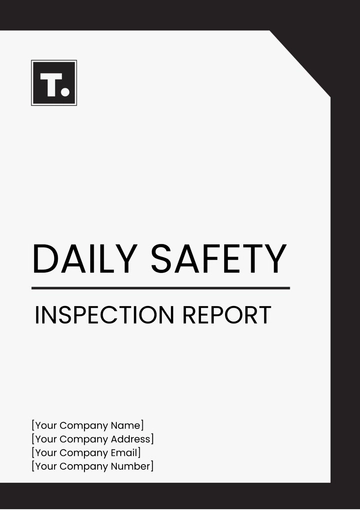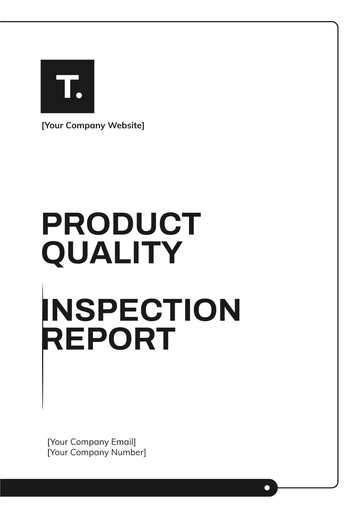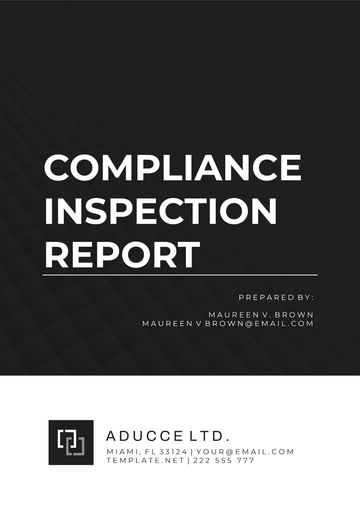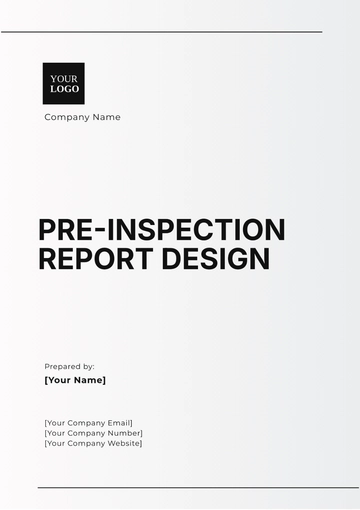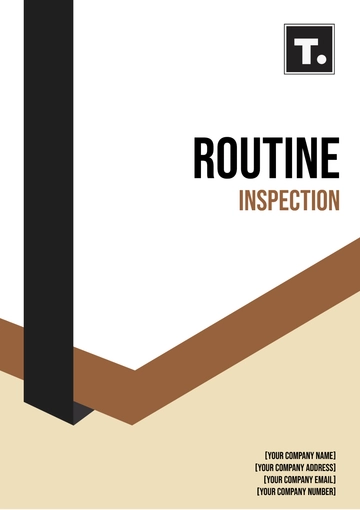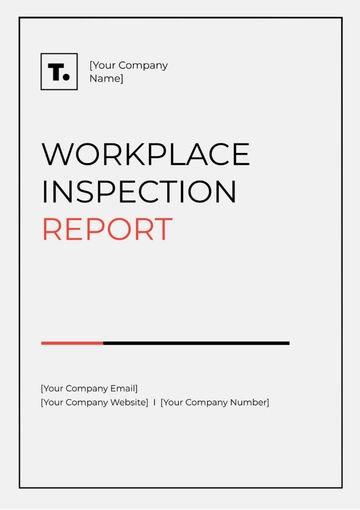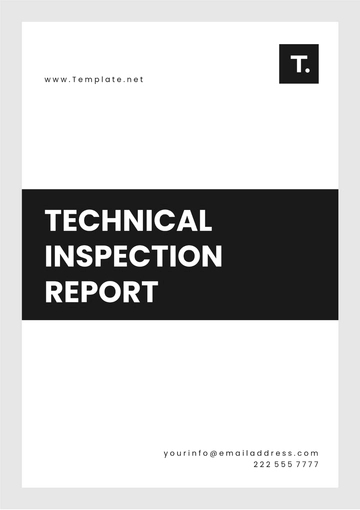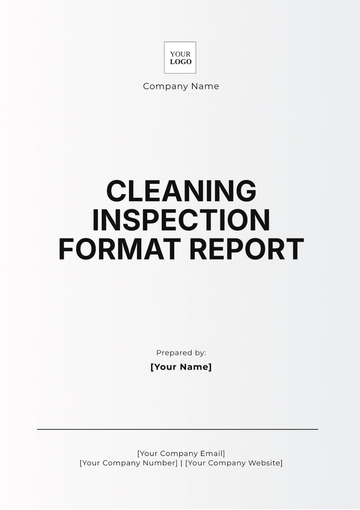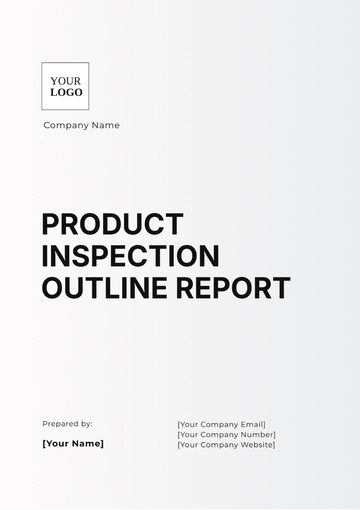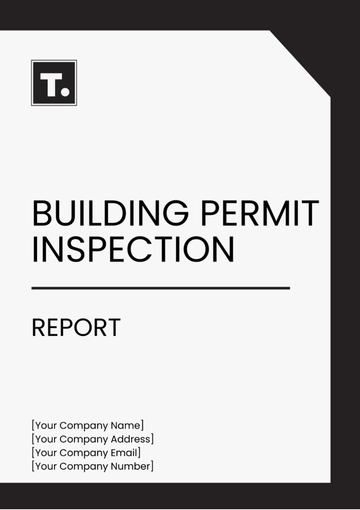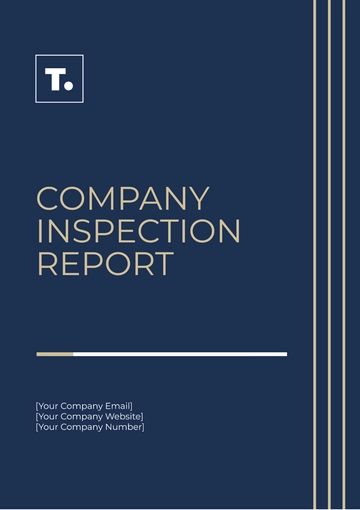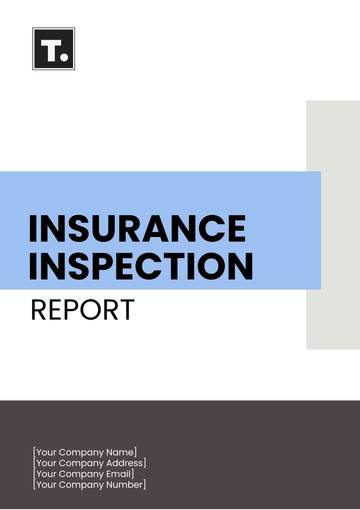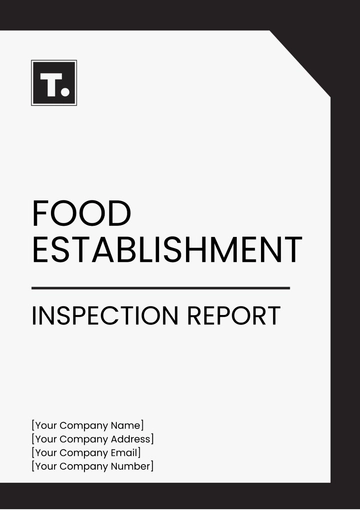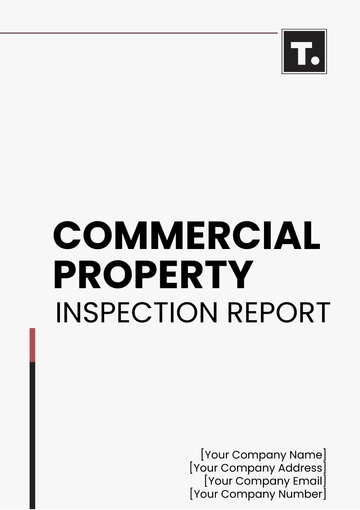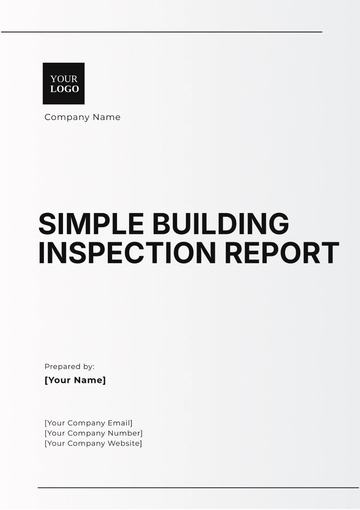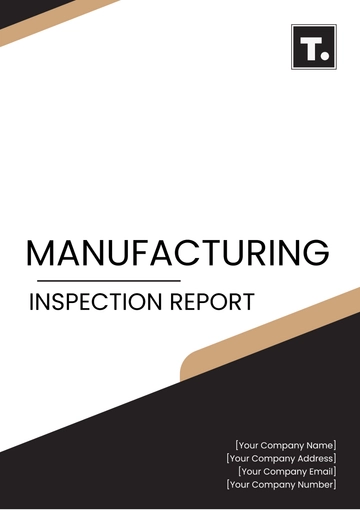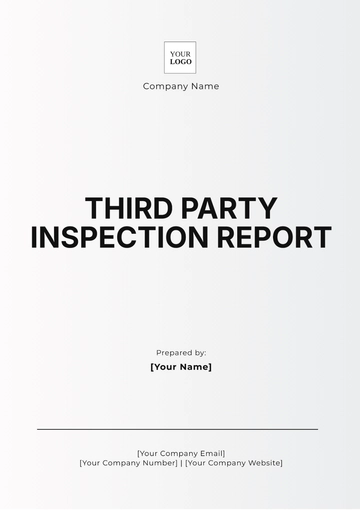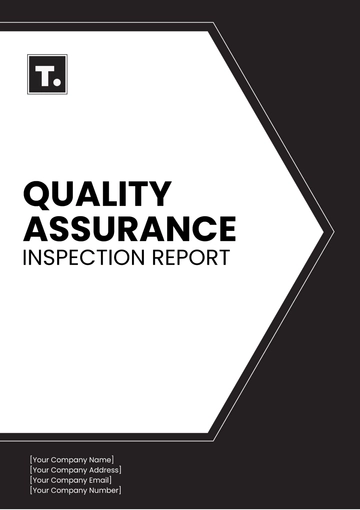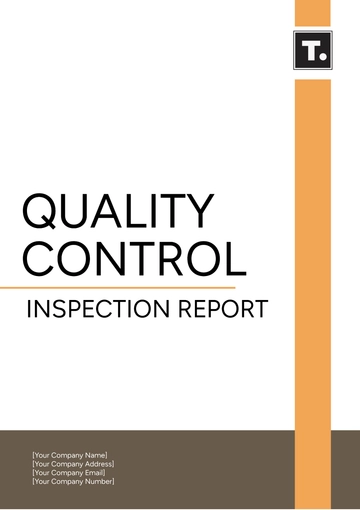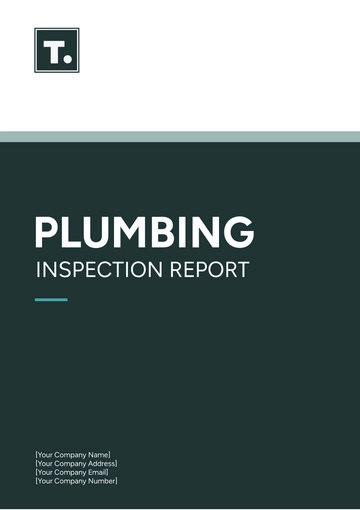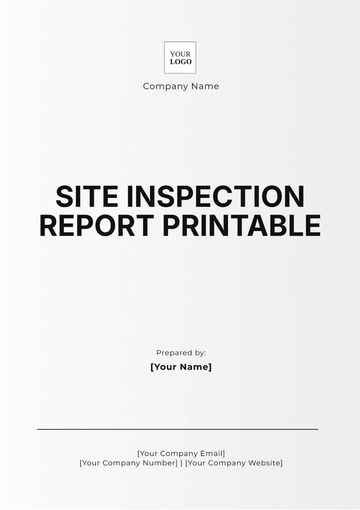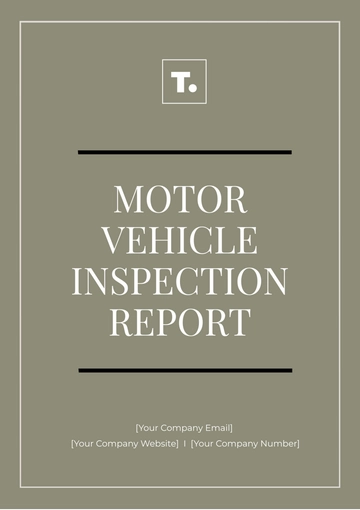Free Restaurant Inspection Report
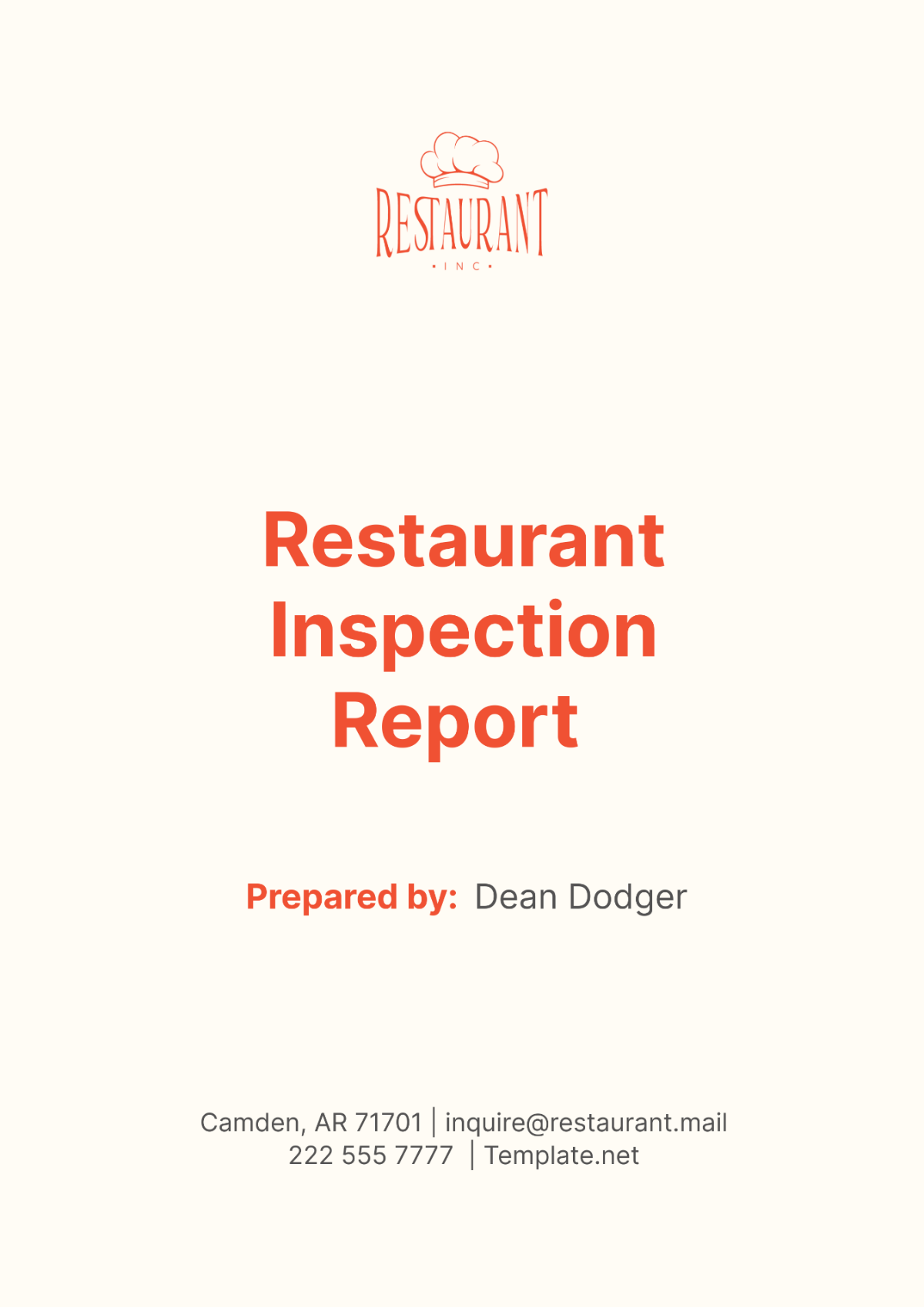
I. Executive Summary
This report presents the findings of a comprehensive inspection conducted at [Your Company Name]. The primary objective of this inspection was to evaluate the restaurant’s adherence to health and safety standards, assess operational procedures, and ensure consistency in the quality of services and products provided. This assessment is integral to maintaining the brand’s reputation, operational success, and customer satisfaction.
The inspection was carried out meticulously, covering key operational areas within the restaurant, including kitchen hygiene, storage and handling, staff health and safety, and dining area cleanliness. Each of these areas plays a crucial role in the overall operation of the restaurant and directly impacts the dining experience offered to the customers. The findings presented in this report are based on systematic checks and observations made by the inspector during the visit.
The results of the inspection provide valuable insights into the restaurant’s operations, highlighting areas of strength and areas that require improvement. These findings serve as a guide for the restaurant to enhance its operational efficiency, improve compliance with health and safety regulations, and elevate the dining experience for its customers. The recommendations provided in this report aim to address the identified issues and contribute to the ongoing success of [Your Company Name].
II. Inspection Details
The inspection was conducted meticulously, with attention to detail being paramount. The following table provides an overview of the inspection details:
Field | Information |
|---|---|
Inspection Date: | March 14, 2050 |
Inspector: | James Martin |
Inspection Areas: |
|
Each area was evaluated based on predefined health and safety parameters defined by regulatory bodies. The aim was to ensure that [Your Company Name] adheres to the highest standards of hygiene and safety.
These inspection details provide a comprehensive overview of the areas inspected, the date of inspection, and the person responsible for conducting the inspection. This information is crucial as it provides context to the findings of the inspection and helps in understanding the scope of the inspection.
Moreover, these details also serve as a record of the inspection process. They can be referred to in the future to track improvements or changes in the restaurant’s operations over time. This can be particularly useful in identifying patterns, understanding recurring issues, and implementing effective solutions. Therefore, maintaining a detailed record of the inspection details is an essential part of the inspection process.
III. Observations and Findings
The inspection process involved a thorough examination of various operational areas within the restaurant. The below table summarizes the scores and key observations made during the restaurant inspection:
Area | Score | Comments |
|---|---|---|
Kitchen Hygiene | 95% | Excellent adherence to hygiene standards. |
Storage and Handling | 88% | Good practices overall, minor issues in FIFO implementation. |
Staff Health and Safety | 91% | All staff equipped with necessary PPE; training refresher recommended. |
Dining Area Cleanliness | 93% | High levels of cleanliness and sanitization observed. |
A. Kitchen Hygiene
The kitchen hygiene was found to be excellent, with a score of 95%. This indicates that [Your Company Name] has been successful in maintaining high standards of cleanliness and sanitation in the kitchen area. However, continuous efforts should be made to ensure that this standard is maintained consistently.
B. Storage and Handling
The storage and handling practices were generally good, with a score of 88%. However, minor issues were observed in the implementation of the First-In-First-Out (FIFO) method. It is recommended that [Your Company Name] takes necessary steps to address these issues and improve the efficiency of its storage and handling practices.
C. Staff Health and Safety
The staff health and safety scored 91%, indicating that all staff are equipped with necessary Personal Protective Equipment (PPE). However, it is recommended that a training refresher is conducted to ensure that all staff members are fully aware of the health and safety protocols.
D. Dining Area Cleanliness
The dining area cleanliness was rated highly, with a score of 93%. This shows that [Your Company Name] has been successful in maintaining a clean and hygienic dining environment for its customers. Continuous efforts should be made to ensure that this standard is maintained consistently.
The observations and findings from the inspection provide valuable insights into the operational practices of [Your Company Name]. They highlight the areas where the restaurant excels, as well as the areas where improvements can be made. By addressing these issues, the restaurant can enhance its operational efficiency, improve customer satisfaction, and ensure compliance with health and safety regulations.
Moreover, these findings also serve as a benchmark for future inspections. They provide a clear picture of the current state of operations at [Your Company Name], which can be compared with future observations to track improvements or changes over time. This can be particularly useful in identifying patterns, understanding recurring issues, and implementing effective solutions. Therefore, it is crucial that these findings are reviewed and acted upon to ensure the continued growth and success of the restaurant.
IV. Recommendations
Based on the findings from this inspection, the following recommendations are made to enhance the operational efficiency, safety, and customer satisfaction of [Your Company Name]. Implementing these recommendations will help in maintaining the competitiveness and reputability of the establishment:
A. Kitchen Hygiene
Regular Cleaning Schedule: Implement a regular cleaning schedule to ensure all kitchen areas are cleaned thoroughly after each shift. This will help maintain a hygienic environment and prevent the buildup of food debris and bacteria.
Staff Hygiene Training: Conduct regular hygiene training for all kitchen staff to reinforce the importance of personal hygiene and cleanliness. This will help prevent cross-contamination and ensure the safety of the food served.
Equipment Maintenance: Regularly service and clean all kitchen equipment to ensure it is functioning properly and safely. This will help prevent equipment malfunctions that could disrupt operations and pose safety risks.
Waste Management: Implement effective waste management practices to ensure waste is disposed of promptly and hygienically. Proper waste management can prevent pest infestations and reduce odors in the kitchen.
Pest Control: Regular pest control inspections should be conducted to prevent any infestations. This will help maintain a clean and safe kitchen environment.
B. Storage and Handling
FIFO Training: Conduct training sessions for staff on the importance and implementation of the FIFO method. This will help ensure that food is used before its expiry date, reducing waste and ensuring freshness.
Storage Organization: Organize storage areas to make it easier to follow the FIFO method. Proper organization can also improve efficiency and make it easier to keep track of inventory.
Regular Inventory Checks: Conduct regular inventory checks to ensure older stock is used first. This will help reduce waste and ensure the quality of the food served.
Clear Labelling: Ensure all items are clearly labelled with their receiving dates. This will make it easier to follow the FIFO method and prevent the use of expired ingredients.
C. Staff Health and Safety
Regular Safety Training: Conduct regular safety training sessions for all staff members. This will help ensure that all staff are aware of safety procedures and can respond effectively in case of emergencies.
Safety Equipment Checks: Regularly check and replace any damaged or outdated safety equipment. This will help ensure the safety of the staff and prevent accidents.
Emergency Procedures: Ensure all staff are aware of and trained in emergency procedures. This will help ensure a quick and effective response in case of an emergency.
Workplace Ergonomics: Assess the workplace for ergonomic risks and make necessary adjustments to prevent injuries. This can improve staff comfort and productivity, and reduce the risk of work-related injuries.
Health Checks: Regular health checks for staff can help prevent the spread of foodborne illnesses. This will help ensure the safety of both the staff and the customers.
D. Dining Area Cleanliness
Regular Cleaning Schedule: Implement a regular cleaning schedule for the dining area. This will help maintain a clean and inviting environment for customers.
Staff Training: Train staff on proper cleaning procedures and the importance of cleanliness. This will help ensure that cleaning tasks are performed effectively and consistently.
Customer Feedback: Encourage customer feedback on cleanliness and address any issues promptly. This will help ensure that high standards of cleanliness are maintained and improve customer satisfaction.
Pest Control: Regular pest control inspections should be conducted to prevent any infestations. This will help maintain a clean and comfortable dining environment.
Waste Management: Implement effective waste management practices to ensure waste is disposed of promptly and hygienically. This will help maintain cleanliness and prevent odors.
Restroom Maintenance: Regularly clean and maintain restrooms as they are a key part of the overall dining experience. Clean and well-maintained restrooms can improve customer satisfaction and contribute to a positive dining experience.
V. Conclusion
The inspection conducted at [Your Company Name] was comprehensive and thorough, covering all key operational areas of the restaurant. The findings of the inspection provide valuable insights into the current state of operations, highlighting both the strengths and areas that require improvement. These findings are a vital resource for the restaurant to boost its operational performance, ensure adherence to health and safety standards, and improve the dining experience for its customers.
Moving forward, it is recommended that [Your Company Name] takes the findings and recommendations of this report into serious consideration. Implementing the suggested improvements will not only ensure compliance with health and safety standards but also contribute to the overall success and reputation of the restaurant. Regular inspections and continuous improvements are key to maintaining high standards and delivering an exceptional dining experience. By addressing the identified issues and striving for excellence, [Your Company Name] can continue to thrive in the competitive restaurant industry.
- 100% Customizable, free editor
- Access 1 Million+ Templates, photo’s & graphics
- Download or share as a template
- Click and replace photos, graphics, text, backgrounds
- Resize, crop, AI write & more
- Access advanced editor
Ensure operational excellence with the Restaurant Inspection Report Template available on Template.net! This is an editable format to document inspection findings. Utilize the customizable features to address specific areas of concern. With the aid of the AI Editor Tool, streamline inspection reporting and ensure thorough documentation. Access to get started!
You may also like
- Sales Report
- Daily Report
- Project Report
- Business Report
- Weekly Report
- Incident Report
- Annual Report
- Report Layout
- Report Design
- Progress Report
- Marketing Report
- Company Report
- Monthly Report
- Audit Report
- Status Report
- School Report
- Reports Hr
- Management Report
- Project Status Report
- Handover Report
- Health And Safety Report
- Restaurant Report
- Construction Report
- Research Report
- Evaluation Report
- Investigation Report
- Employee Report
- Advertising Report
- Weekly Status Report
- Project Management Report
- Finance Report
- Service Report
- Technical Report
- Meeting Report
- Quarterly Report
- Inspection Report
- Medical Report
- Test Report
- Summary Report
- Inventory Report
- Valuation Report
- Operations Report
- Payroll Report
- Training Report
- Job Report
- Case Report
- Performance Report
- Board Report
- Internal Audit Report
- Student Report
- Monthly Management Report
- Small Business Report
- Accident Report
- Call Center Report
- Activity Report
- IT and Software Report
- Internship Report
- Visit Report
- Product Report
- Book Report
- Property Report
- Recruitment Report
- University Report
- Event Report
- SEO Report
- Conference Report
- Narrative Report
- Nursing Home Report
- Preschool Report
- Call Report
- Customer Report
- Employee Incident Report
- Accomplishment Report
- Social Media Report
- Work From Home Report
- Security Report
- Damage Report
- Quality Report
- Internal Report
- Nurse Report
- Real Estate Report
- Hotel Report
- Equipment Report
- Credit Report
- Field Report
- Non Profit Report
- Maintenance Report
- News Report
- Survey Report
- Executive Report
- Law Firm Report
- Advertising Agency Report
- Interior Design Report
- Travel Agency Report
- Stock Report
- Salon Report
- Bug Report
- Workplace Report
- Action Report
- Investor Report
- Cleaning Services Report
- Consulting Report
- Freelancer Report
- Site Visit Report
- Trip Report
- Classroom Observation Report
- Vehicle Report
- Final Report
- Software Report
